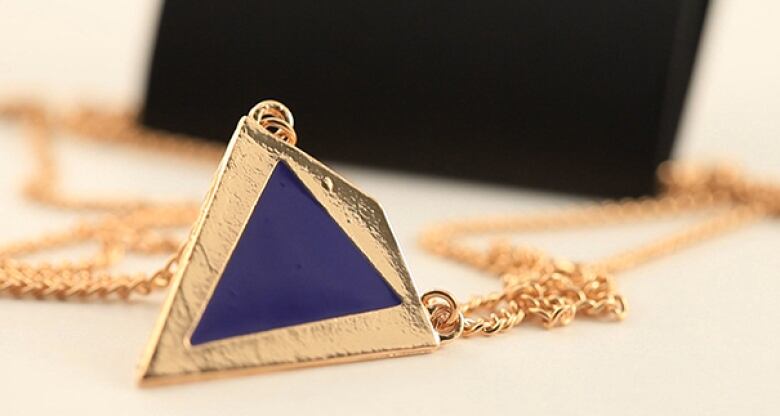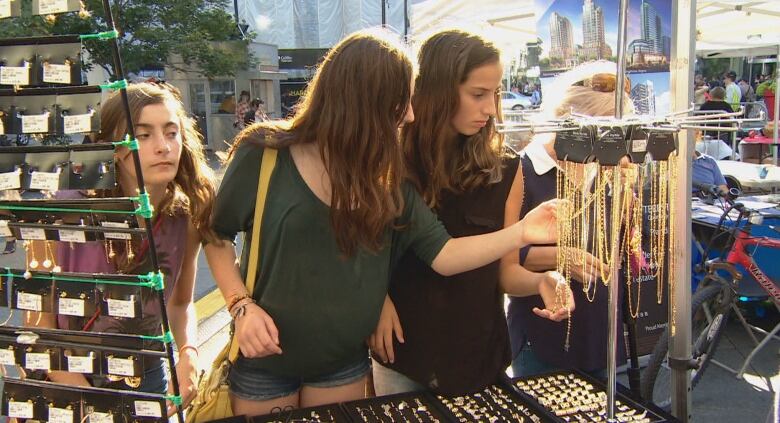Ardene removes toxic jewelry from stores, vows change
Last year's investigation into cadmium levels in low-cost jewelry leads to response from retailer, government

Fashion retailer Ardene says it has adopted a new testing regime and stricter limits on suppliers in an effort to reduce levels of a toxic metal in its jewelry.
The moves are an about-face for the Quebec-based retailer, which made no visible in-store changes when shown test results from a CBC Marketplace investigation last year.
In January 2016, Marketplace found that certain jewelry, in some cases, had hundreds of times more cadmium than the limits set out by federal guidelines. In one instance, a blue triangle pendant was 99.6 per cent cadmium the highest level ever recorded for jewelry in Canada.
Cadmium is a known toxin. While generally safe to touch, if sucked, chewed or swallowed, it can lead to organ failure and, in rare cases, death. The federal government describes exposure to cadmium as a "significant health risk."

Ardene says it has since hired a third-party laboratory to test the costume jewelry it plans to sell and now requires its suppliers meet new standards with respect to cadmium and other components in the manufacturing process. The company says it rolled out the changes over the course of 2016, but is only revealing them publicly now.
In a statement, the retailer says it is "upgrading our product quality standards to ensure they exceed those outlined by Health Canada."
By implementing the changes, Ardene is really showing best management practices, says University of Toronto Earth Sciences professor Miriam Diamond. "They're going above and beyond what's required."
Guidelines becoming regulation
Health Canada has also introduced its own changes, making difficult-to-enforce guidelines into more stringent regulations with clear limits to prompt a recall, rather than seek a time-consuming investigation.
The federal regulator sent inspectors to Ardene in the wake of the Marketplace investigation. In December, it proposed changes to Children's Jewelry Regulations that would set a limit of 130 milligrams per kilogram of total cadmium in any item.
"This gives Health Canada greater flexibility and speed to act," says Diamond. "They've got the authority of law behind them."

The upgrading of the regulations is still in the review process. But the 75-day opportunity for business and the public to comment ended this week. The new rules could come into force as early as this spring, but the government may allow a buffer period for suppliers to adjust.
The new rule will only govern jewelry marketed directly to children, defined as those 15 years and under. There are no legal limits on cadmium in other jewelry, something which Diamond calls regrettable, as some adults or their babies may also suck on bracelets and necklaces.
The European Union restricts levels of toxic chemicals, like cadmium, for all jewelry.
Cheaper materials
Retailers like Ardene source much of their costume jewelry from overseas suppliers, often from markets around the Chinese commercial city of Yiwu. Cadmium became the metal of choice after Western governments banned the use of lead in jewelry.
Cadmium, like lead, is inexpensive. It has a lower melting temperature than zinc, another ingredient common in costume jewelry, and less energy is used to produce the product. But when it is in a liquid state, the toxicity increases dramatically.
- MARKETPLACE | Cadmium in low-cost jewelry may create toxic bling
- Cadmium exposures in Canadians raise questions for doctor
"I know cadmium is dangerous for the workers," the manager of a back-alley factory told CBC Marketplace during last January's investigation. "But most of them want to survive, they want to earn money."
Marketplace learned that sometimes retailers want suppliers to use cadmium because it results in a cheaper end product. But in other cases, it is the suppliers themselves who choose to use the cadmium, even if retailers have requested it not be used.
Ardene says "members of our management team conducted on-site visits to key overseas suppliers" last fall to ensure compliance with its updated quality and safety standards.












_(720p).jpg)


 OFFICIAL HD MUSIC VIDEO.jpg)
.jpg)



























































































